Cyberpunk 2077 Phantom Liberty Review: 5 Bold Reasons This DLC Redefines CD Projekt’s Open World Vision
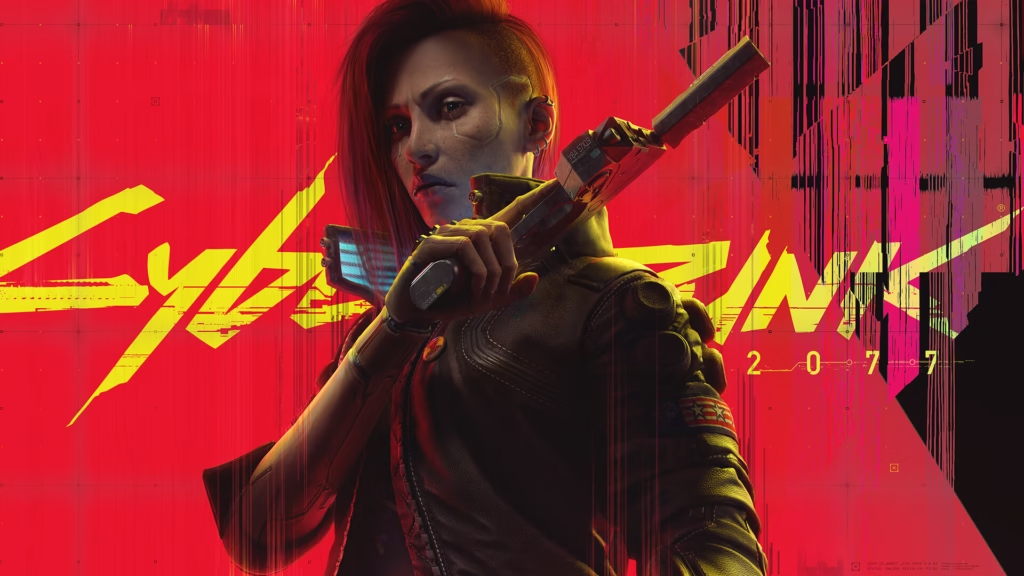
The arrival of Phantom Liberty marks a dramatic turning point for Cyberpunk 2077. After years of hotfixes and a massive Cyberpunk 2077 update (Update 2.0), CD Projekt Red delivers this action-packed expansion as a statement of how far the game has come. It takes the base game’s wild technology-fueled world and refines it into a tightly woven spy-thriller adventure. In this Phantom Liberty review, we uncover five bold reasons why this Cyberpunk 2077 DLC packs a punch. You’ll see how the expansion’s story and gameplay improvements — from Idris Elba’s charismatic Solomon Reed to redesigned perks and a gritty new district — elevate CD Projekt’s vision for an open-world RPG.
Cinematic Spy-Thriller Narrative: Solomon Reed’s High-Stakes Mission
Phantom Liberty transforms Cyberpunk 2077 into a lean, mean spy story. The DLC’s plot is electric with tension: V is pulled into a shadow war involving a rogue U.S. president, corrupt politicians, and a jailed secret agent. Idris Elba’s Solomon Reed — a stoic, battle-hardened NUSA (National United States of America) spy — dominates every scene he’s in, lending a magnetic intensity to the Phantom Liberty story. Reed’s arc, which unfolds with commanding presence and moral complexity, raises the emotional stakes. As the agent who reluctantly recruits V, Reed brings a relentless drive and gravitas that make your choices feel weighty.
This narrative shift is balanced by CD Projekt’s tighter storytelling. Phantom Liberty feels more focused and personal than the sprawling base game. It blends high-octane action set-pieces with quieter, tense moments of espionage. You’ll infiltrate a neon-slick gala, hack corporate towers under the cover of night, and question allies in back rooms. In each mission, choices ripple through the plot: dialogues under duress, sudden betrayals, and the looming “big reveal” give the tale its classic spy-thriller flavor. At the same time, the expansion wisely anchors the high-flying yarn to the grounded reality of Night City.
While it dives deep into espionage tropes, Phantom Liberty never forgets Cyberpunk 2077’s soul. The dialogue choices and mission variety break up the gunfights with tense sneaking and high-tech subterfuge. You will still hear Johnny Silverhand’s quips (Keanu Reeves returns with surprising new layers), and the writing sprinkles in dark humor and reflections on loyalty and identity. This balanced mix of cinematic drama and thematic depth ensures that even as a Cyberpunk 2077 expansion, Phantom Liberty’s story hooks you emotionally and intellectually, redefining how narrative can drive an open-world game.
Dogtown: A New Playground of Chaos and Opportunity
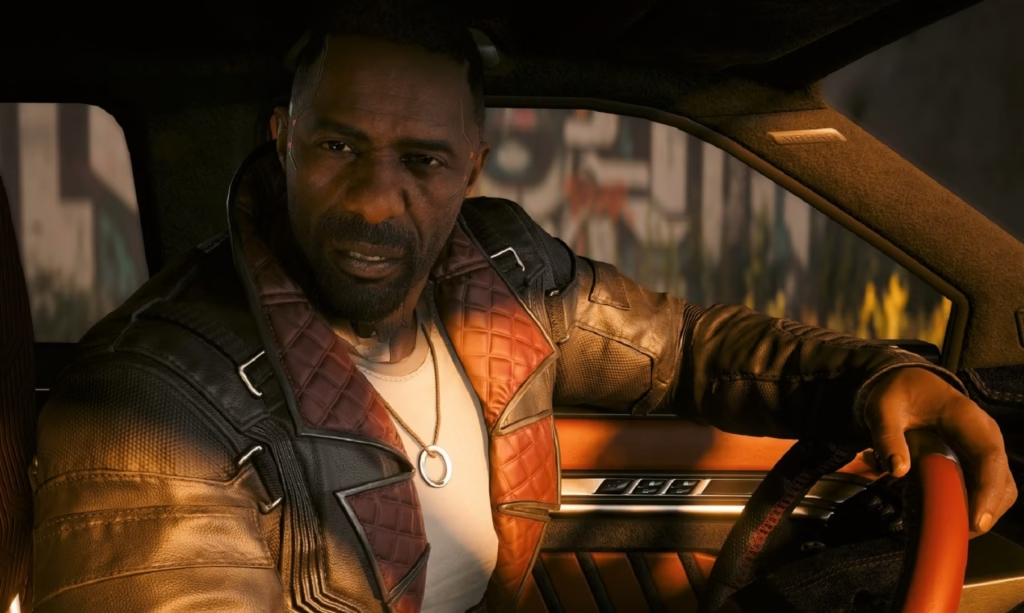
The expansion’s new district, Dogtown, presents a fresh canvas for adventure. Walled off on the far edge of Night City, Dogtown feels like a Vegas-badlands hybrid – a lawless warzone built on vertical slums, crumbling highways, and neon-lit black markets. It’s ruled by the warlord Kurt Hansen (an iron-fisted ex-soldier), and the atmosphere is gritty and dangerous. As soon as you step in, you sense the desperation and raw energy of its people. Detailed lighting effects — rain-slicked streets glinting with holograms — make Dogtown feel like Night City’s dark mirror in Cyberpunk 2077.
Most of Phantom Liberty’s missions, gigs, and side content are intelligently embedded in Dogtown, giving it real purpose beyond aesthetics. An adrenaline-fueled opening mission through a stadium black market instantly shows how the environment supports varied playstyles: explosions and firefights erupt in grand open spaces, while tight back alleys reward quiet infiltration. Side gigs and courier runs in Dogtown aren’t just filler. Each one feels custom-built to the district’s vibe. On one errand, you’ll dive into gang territory with heavy weapons; in another, you use a sniper rifle to shadow a target from a rooftop quietly.
Compared to the broader Night City of the base game, Dogtown is smaller but denser. Its tight geography is a strength: you learn the layouts fast, which makes navigating and planning strategies easier. This design focus means Dogtown truly feels like part of the open world rather than just a loading screen destination. It enriches Cyberpunk 2077’s world-building by adding distinct factions (mercenary gangs, a black-market underground, and remnants of NUSA forces) and memorable locations (collapsed overpasses, forsaken nightclubs, and a creepy ruin-turned-server farm). In short, Dogtown injects new life into the Cyberpunk 2077 expansion. It’s a bold new playground that balances chaos with surprising warmth — pockets of everyday struggle and humanity peek through the chaos, reminding you why this world still matters.
Overhauled Gameplay Systems: Perks, Weapons, and Combat Reborn
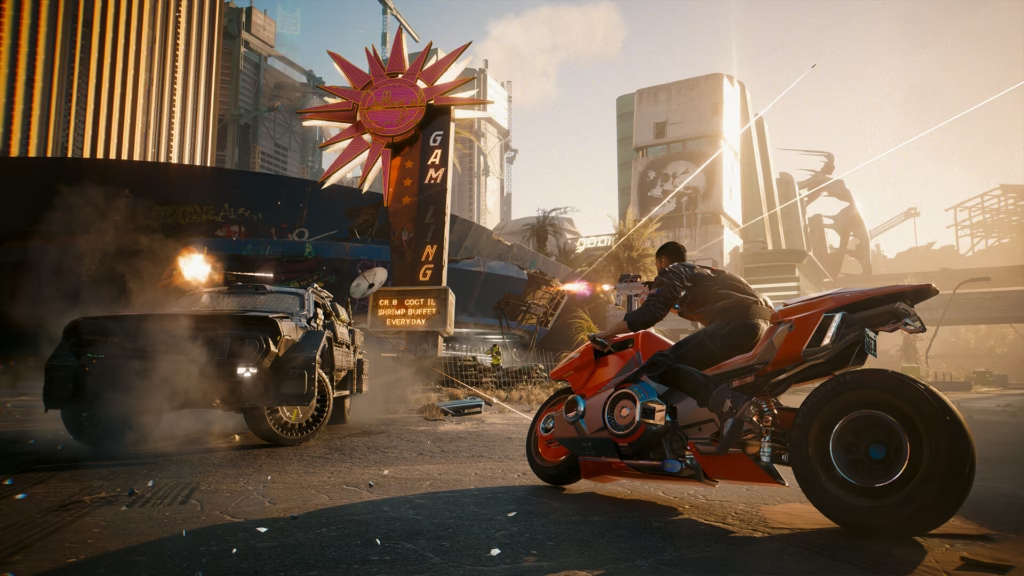
Phantom Liberty doesn’t just shine in story; it breaks new ground in gameplay mechanics, too. Coupled with the free Update 2.0 patch, this DLC almost feels like a partial reboot of the base game’s RPG systems. The Revamped Perk System alone is a game-changer. No longer are perks just static +5 stats — a brand-new Relic skill tree was introduced. Relics are powerful items you earn and socket into built-in slots, granting dynamic abilities and bonuses. This means character building feels more flexible and exciting. To illustrate: you might equip an Airdash Relic (which lets you dash in mid-air while slowing time) alongside a Bullet Deflect Relic (letting you parry incoming fire with your blade). Suddenly, your Cyberpunk 2077 V can leap through the air, return gunfire with a katana slice, and then vanish in a flash of optical camo — all because of how these new perks stack. This creative combination of Relics and rebalanced skill trees makes experimentation joyful.
Alongside perks, combat itself feels supercharged. New moves and weapons keep firefights fresh: there are awe-inspiring finishers (for example, one lethal Beheading Strike takes an enemy down instantly) and expanded quickhack options that reward brain over brawn. Even driving is upgraded — you can now blast foes from behind the wheel, turning chases into rolling shootouts. Enemy AI and police behavior have been tightened too; cops pursue you more intelligently now, and MaxTac is a relentless threat at higher heat levels. To give an idea of the scope, here are some of the major gameplay overhauls in Phantom Liberty:
- Relic and Perk Upgrades: Over 100 new Relic perks and a streamlined skill tree mean more build variety. Perks like Sprintdash (run while crouched) and Synapse Recalibration (faster quickhacking cooldown) add tactical depth.
- Combat Enhancements: Lightning-fast Airdash combos, powerful finishers, and new cyberware (like a hack-laced monowire whip) turn battles into electrifying spectacles. A Hack Queue system lets Netrunner builds execute consecutive quickhacks seamlessly.
- Vehicle & World Combat: The once-basic driving now supports fully-fledged combat — rockets and guns from vehicles feel satisfying. Meanwhile, world improvements (smarter cops, better cover system) polish every fight.
- Visual and Audio Upgrades: Subtle but immersive enhancements — from the slick updated UI during a gunfight to the thundering sound of heavy weapons — keep the action tight and visceral.
Together, these changes reforge Cyberpunk 2077’s core loops. The base game’s promise of mixing guns, cybertech, and hacking has never felt more potent or balanced. While some veterans miss a few classic perk quirks, most agree: Phantom Liberty’s gameplay overhaul makes combat and exploration more thrilling than ever. You’ll find yourself learning new moves, trying cross-attribute builds (like a brawler-netrunner hybrid), and replaying missions just to test a different setup. It’s a clear example of CD Projekt Red treating this Cyberpunk 2077 expansion as a chance to refine their open-world engine, showing that the studio still cares about delivering an RPG that feels cutting-edge and deeply customizable.
Stealth and Strategy: Silence Speaks Louder than Guns
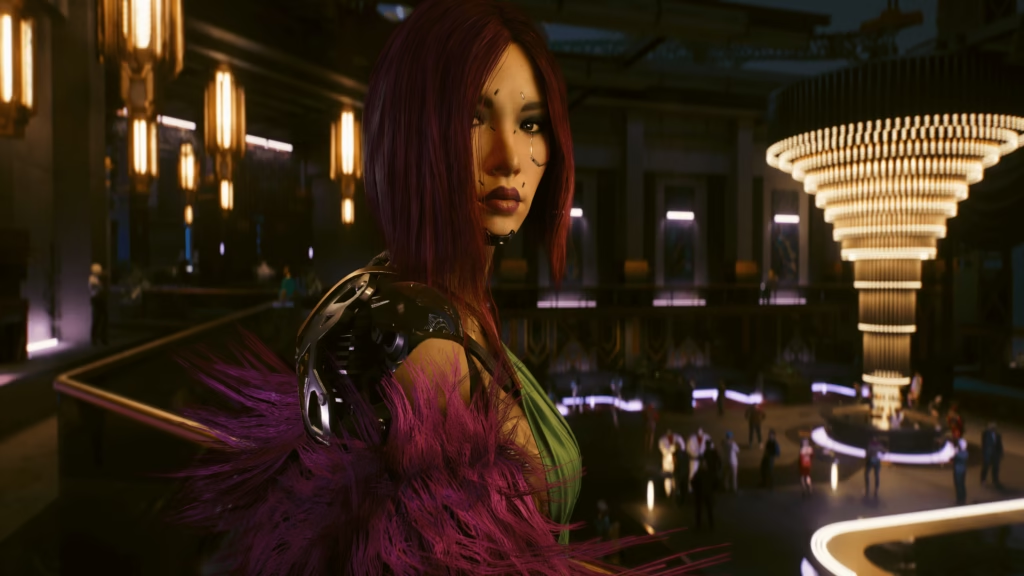
In Phantom Liberty, silence can be deadly. The expansion gives stealth a long-awaited overhaul, making sneaking a fully viable way to tackle missions. Early in a Spy-themed plot like this, it almost feels natural: you’ll don a face mask to impersonate enemies, choose a quiet mask-and-sneak approach to infiltrate a gala, or use shadowy cover and silenced weapons to clear a compound one enemy at a time. But the new mechanics under the hood push stealth further than ever.
Technically, the game’s AI has been tweaked so that foes investigate sounds and disappearances more realistically. If you evade their line of sight or silently eliminate a guard, enemies spread out to search, giving you a chance to slip away or knock another foe cold before alarms blare. A game system called Breaking Line-of-Sight now truly returns you to stealth mode if you can hide again, instead of automatically triggering a full alert as before. Combine this with new stealth cyberware (like Optical Camo that makes you briefly invisible) and utility perks in the Cool attribute tree (perks like Ninjutsu let you run while crouching, and Vanishing Act auto-activates camo when you sprint-sliding). Suddenly, crouching in the shadows is as potent an option as charging in with guns blazing.
For example, one mission might introduce a smart AI surveillance grid. With quick thinking and quickhacks, you might peel the grid’s eyes away with a distraction quickhack, slip past guards in the darkness, and then execute a silent melee take-down. The DLC never forces you down this path, but it makes sneaking deeply rewarding when you try it. These parallel approaches demonstrate CD Projekt’s balanced design: the world layout and mission design always support multiple styles. Whether you rush in with a shotgun or silently pick off enemies with a silenced pistol and a quickhack chain, Phantom Liberty’s systems back you up. It’s a dramatic improvement over Cyberpunk 2077’s original stealth (which was minimal at launch). Here, stealth feels fully integrated as another layer of play, reflecting the expansion’s spy motif and giving even replaying a mission a fresh twist.
A Future Forged in Phantoms: What This DLC Means for CD Projekt’s Roadmap
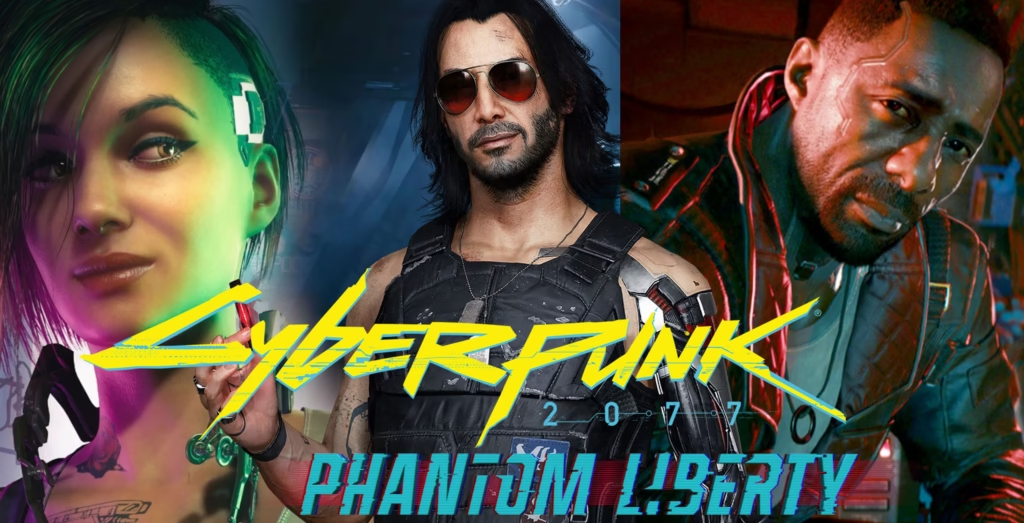
Phantom Liberty isn’t just a standalone thrill; it feels like a milestone for CD Projekt’s future. By successfully blending a cinematic narrative with polished mechanics, this Cyberpunk 2077 DLC sets a new standard for what fans can expect next, whether it’s more story expansions or a full sequel. First, the fact that Phantom Liberty was made with such care suggests CDPR will continue down the path of expansive, story-driven DLC, much like The Witcher 3’s beloved expansions once did. The integration of the free 2.0 update shows they learned from the rocky launch: updates and big expansions will now aim to complement each other, improving core gameplay as they expand the world.
We can speculate on hints, too. Phantom Liberty heavily features government intrigue and espionage, opening the door for future plots involving other Night City underbellies or global Cyberpunk 2077 politics. Idris Elba’s Solomon Reed might not be the last mysterious agent we meet — his history with Songbird and the U.S. government raises questions that could echo in future content. Even the new ending for V’s story (locked behind completing this expansion) feels like it paves a route to a sequel: it reframes V’s journey and final choices, possibly setting up a new timeline for a follow-up game or DLC saga. The inclusion of collectible Relics in this DLC hints at more to come in the Relic system, which might become a backbone of endgame content in Cyberpunk 2077 or even a staple feature in whatever comes next.
Beyond narrative clues, Phantom Liberty’s success has a business message: high-profile voice talent, deep gameplay fixes, and real expansion territory all show CD Projekt is willing to invest heavily in Cyberpunk 2077’s future. If a sequel to Cyberpunk 2077 is ever greenlit, it likely will draw lessons from Phantom Liberty’s approach — more polished at launch, more cinematic, with expansive new zones. And in the short term, we wouldn’t be surprised to see more DLCs or free updates that explore other parts of the map (maybe a rebuilt Pacifica or the Badlands). The DLC’s focus on replayable content (airdrops, courier missions, gigs) also suggests CDPR wants to keep players engaged long-term, possibly building toward an online component or seasonal content.
In sum, Phantom Liberty feels like a powerful signpost. It tells players, “We’ve heard you.” It shows that CD Projekt Red can deliver on the Cyberpunk 2077 update front by reinventing systems while still telling a bold story. For fans wondering if Cyberpunk 2077’s future is bright, this DLC is an optimistic answer. It redefines CDPR’s open world vision — one that blends cinematic ambition with satisfying gameplay — and shines a light on the road ahead for Night City.
